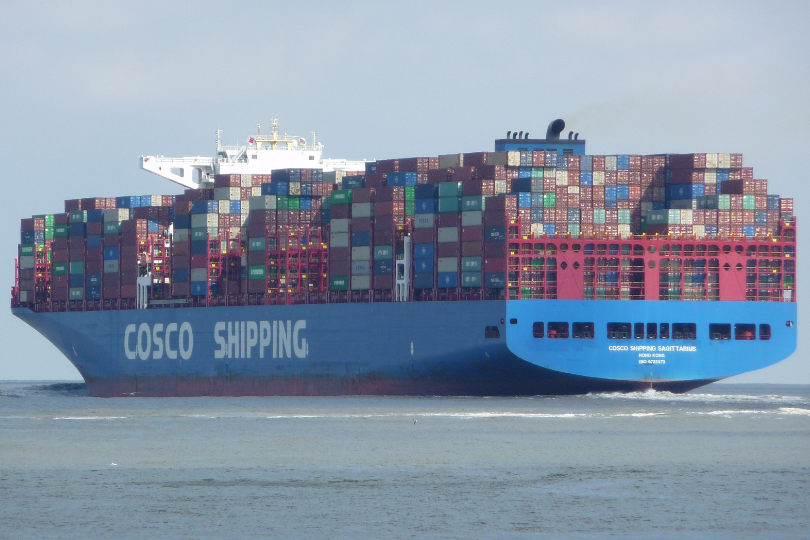Mexico Imposes New Import Duties on Chinese Goods, Likely With Pressure from the U.S.
ON 03/20/2024 AT 02 : 40 AM

Earlier this month the Mexican Ministry of Economy levied tariffs amounting to between 3.68% and 12.35% on steel balls imported from China.
Most of these are grinding balls, used in multiple locations in Mexico’s lucrative mining sector. They are used in processing machinery to break down raw mining ore and other materials, for further post-processing and other mineral and metal extraction.
The compensatory duties vary based on the specific Chinese manufacturer involved. Grinding balls coming from Iraeta Energy are being hit with the smallest tariffs, at 3.68%. Oriental Casting will see charges of 4.5%, and Changshu Longte will be penalized with a 12.35% surcharge, the highest number imposed.
Then on March 15 Mexico added to this with a compensatory duty of 31% of all Chinese steel nails.
Both came after an investigation concluded that the People’s Republic of China (PRC) was engaged in unlawful dumping of various goods exported to Mexico at prices subsidized by the Chinese government. That investigation started in September and only recently concluded.
Though what is being imported may seem small, that Mexico was even considering these tariffs represents a significant change in policy, especially as the Mexican economy has been accelerating and is anticipating even faster growth as it continues development of its Inter-Oceanic Corridor project in the Isthmus of Tehuantepec. That project will bring in multiple new factories with China being one of its more important business partners.
The amount of Chinese goods heading into Mexico is also ramping up rapidly, posing threats both to existing Mexican industry and ones the country might be seen as enabling on behalf of the Chinese. That enablement involves providing a stepping stone for China to do final assembly of products using parts imported from the mainland, and gaining access to the freer trade benefits Mexico enjoys, by being part of the trade zone covered by the agreement between Mexico, the United States, and Canada.
As a measure of how this is already affecting Mexico, container shipments from Chinese exporters to Mexico jumped 60% in January 2024 compared to the same month just a year ago.
China has also begun partnering with Mexican companies to manufacture certain high-end consumer electronics products and high-value items such as batteries for certain electric vehicles. Those channels provide yet another means of China getting around import duties for these items as they head into Mexico.
Shipments of Chinese-made automobiles into Mexico are also substantially up. Chinese makers sold a new record level of 129,000 units in 2023. That is a 63% increase from a year ago.
Such a sales increase, especially after equally impressive jumps in prior years, encouraged two of China’s top automakers, BYD and Jaecoo, to make plans last year to build manufacturing plants in Mexico.
BYD, the world’s largest maker of electric vehicles as of Q4 2023 and the largest automaker in China, announced on February 29 it has begun shopping for site locations for the first of what are expected to be several new plants in Mexico.
Jaecoo, party of Chery Automobile Company, the third biggest Chinese vehicle manufacturer, made a similar announcement just last week. It is already looking at land and logistics partners located in the Mexican states of Durango and México. It plans to build a version of its new Jaecoo 7 SUV line at the new facility when it is ready. With SUV sales up 10.8% in Mexico in 2023, targeting this market, especially with potential pricing which could undercut other vehicles in this class, could represent a major win for Jaecoo.
Both companies have been cautious about setting expectations for when their new Mexican plants might be producing cars, but early indications are both could be producing substantial output sometime in the first half of 2025.
Even without these new plants present, shipping data showed Chinese exports of auto parts to Mexico, to support existing manufacturers there and spare parts for its own car exports, were up dramatically last year. Those shipments were up 260% compared to the rate of similar shipments prior to Trump’s launching the U.S. trade war with China in 2017.
The introduction of Chinese auto manufacturing in Mexico, especially with close connections with Mexican business partners which will make these factories “blend in” with the terms and conditions of the USCMA trade agreement, already raised red flags over what it could mean to Big Three automakers based in the United States. The Alliance for American Manufacturers published a report earlier this month declaring that if these Chinese auto factories in Mexico were to take hold, the impact “could end up being an extinction-level event in the U.S. auto sector.”
That could be even worse with China expected to subsidize parts exported to Mexico to support its new plants, while also being able to claim these are substantially – though perhaps not a majority – made in Mexico.
Business leaders in the U.S. are also fearful China might move entire cars as well as car parts into Mexico via stopping points such as South Korea. That nation already has certain free trade agreements in place with the United States, and it would easily be possible for China to take advantage of some criteria under those regulations to bring Chinese autos or their subassemblies at lower tariffs than when shipped directly from China.
Such a threat is why Republican candidate Donald Trump added to his campaign talking points this weekend in Ohio, with a call for a 100% tariff on imports of any Chinese vehicles made in Mexico. But, as everyone should know, what Trump say and what Trump does are often completely different, just like any other politician.
U.S. government regulators point out that the USMCA trade agreement is not wide-open for manipulation by China to get around existing tariff barriers. There are already provisions for ensuring clarity of the originating point-of-origin of components and entire goods shipped from Mexico into the United States.
But with China continuing to subsidize production of parts even as simple as steel nails to support the Mexican construction industry or steel grinding balls for Mexican mining companies, and with the autos it now plans to produce already priced for sale at less than half the price of competitive U.S. models, the potential for damage to U.S. manufacturing industries is serious.
China is also already maneuvering its supply chains and manufacturing plant planning consistent with new tariffs for goods coming into Mexico, as it expects some retaliation even while it is still planning on taking market share from multiple U.S. manufacturing enterprises soon.
According to Vice President Xu Shicheng of the Latin American Society of China, “it’s not new” for Mexico to assess anti-dumping import duties on goods imported from China.
“The American government will still launch new restrictive measures towards the Mexican-made vehicles, especially those electric vehicle producers of China or Chinese-Mexican joint ventures that export cars to the US,” Xu said in a recent interview about China’s trade ambitions in Mexico.
Xu also observed that increased tariffs, especially on autos with substantial Chinese content, will happen regardless of which presidential candidate wins the election this fall.
A new report analyzing the impact of increasing Chinese trade with Mexico released on March 18 by S&P Global Market Intelligence provided independent support for Xu’s observations, on a broader front.
“The US will likely increase measures aimed at curtailing the rise in Chinese exports and foreign direct investment flows to Mexico, such as those applied to electric vehicle software and port cranes,” it said.
 Asiabiznews
Asiabiznews